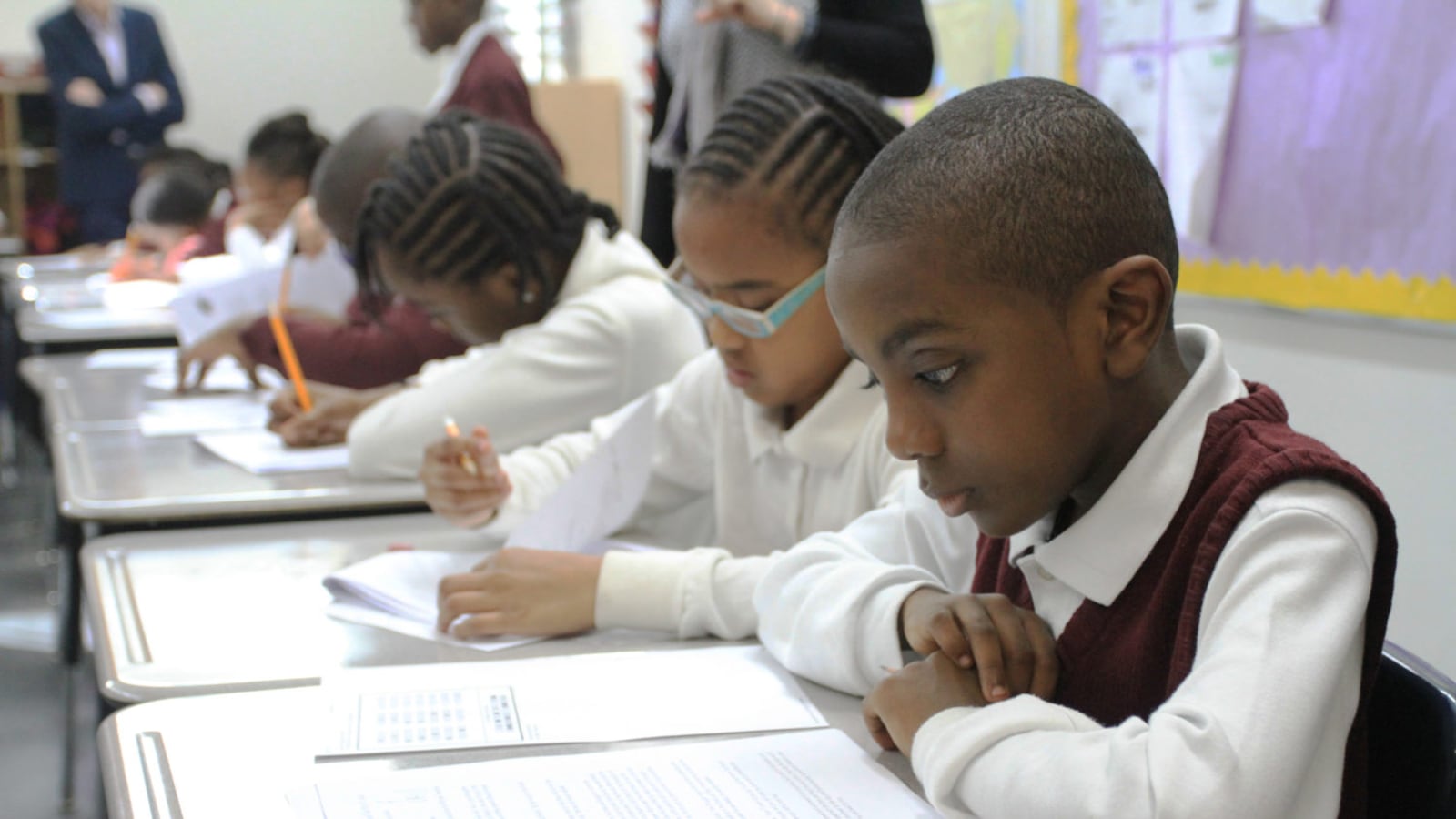Indiana students posted slightly higher scores in 2015 on an important national science exam — both compared to their peers across the country and to Indiana students who last took the test in 2009.
On average, fourth- and eighth-graders across the country posted 4-point gains on the 300-point National Assessment of Educational Progress test, administered to a sample of students in most states last year.
Indiana fourth-graders did a bit better on the 2015 NAEP science test compared to the fourth-graders who took it in 2009, scoring six points higher. Last year’s fourth graders also scored, on average, six points higher than the their peers in other states.
Indiana eighth-graders also scored higher than they did in 2009, up four points to 156 and besting the national average of 153.
Read: Indiana rank continues to rise on the national NAEP test in reading and math
Despite the improvement, most Indiana students who took the test still did not meet the exam’s key “proficiency” standard in science, with just 42 percent of fourth-graders and 36 percent of eighth-graders passing that threshold.
High standards have long been characteristic of NAEP, which calls itself the “nation’s report card” because it has long been the only way to compare students across states. Recently, states have cited gaps between NAEP scores and scores on their own tests to toughen their academic standards and exams.
The latest scores come after many states have had new reading and math standards in place and after years of renewed attention to science instruction. Schools and districts across the country have invested in what they are calling STEM education, an acronym that describes a new approach to incorporating science, technology, engineering, and math into the school day.
The U.S. Department of Education has encouraged the shift, launching a program to recruit science teachers and expand computer science instruction.
“The data themselves don’t tell us why we’ve seen these improvements, but we do think investments we’ve made over the past eight years have made a difference,” Education Secretary John King said.
The next phase, King said, is for high schools to add more advanced science and math courses — something that the new federal education law earmarks extra funding for.
“We know from our civil rights data that there many students who attend high schools where you can’t even take Algebra II or physics,” he said.
Some Indiana educators and policymakers have long advocated for giving students expanded access to science, math and applied-science classes.
For example, Indianapolis Public Schools plans to dramatically expand its partnership with Project Lead The Way next year thanks to a $250,000 grant from American Structure Point, an Indianapolis-based engineering firm. Project Lead The Way is an Indianapolis-based nonprofit that develops curriculum for applied science and project-based classes.
“The STEM (science, technology, engineering and math) emphasis is really the 21st century curriculum,” said Indianapolis Mayor Joe Hogsett at an event announcing the grant earlier this year. “This kind of emphasis needs to be made all over Marion County.”


